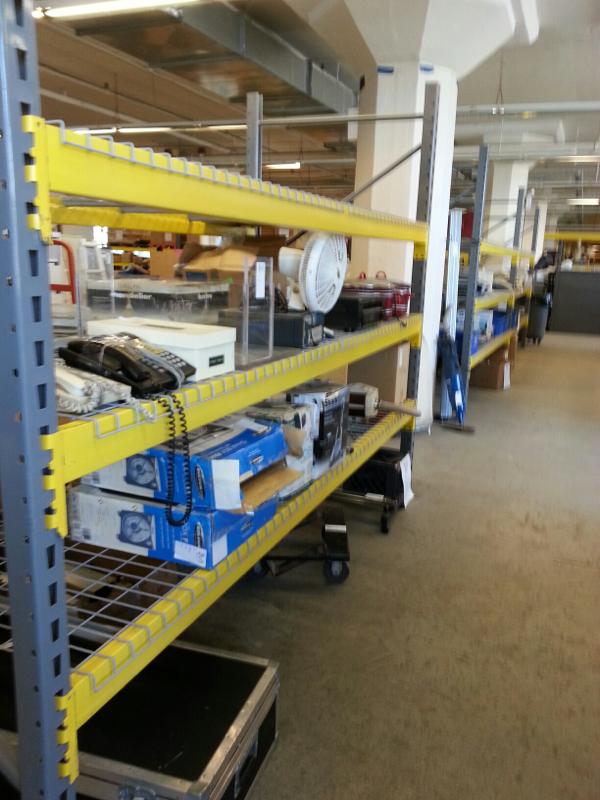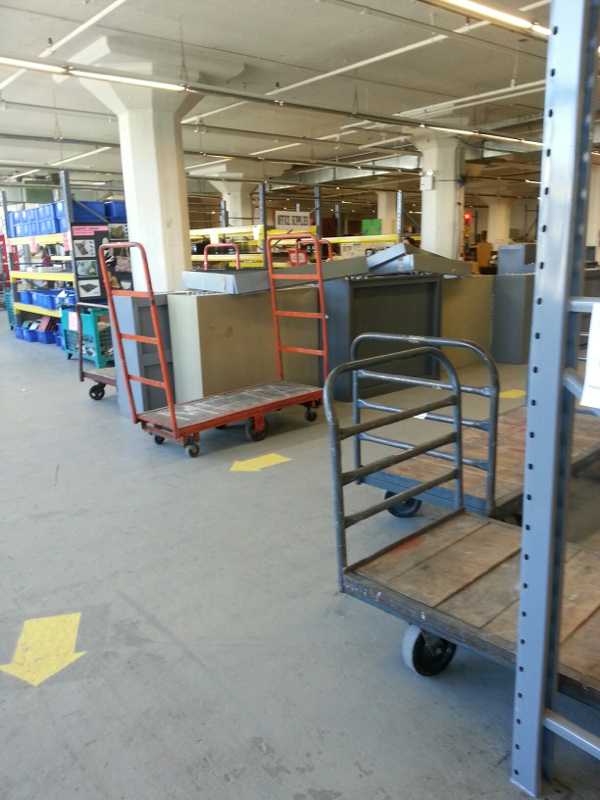It was an exhausting day yesterday at Materials for the Arts at Long Island City. I was so depleted after shopping for so much leather (a material I recently discovered I love working on while here in the US) I dropped off to sleep as early as 7pm. So now, I am awake at 3am and thinking of starting the day early at Governor's Island, even as early as the very first trip at 7am.
MFTA is a curious facility that makes sense to any artist working in New York. It is run by the city and is a place where donations of surplus, usable refuse and stuff you can pick off the curb are made available to artists as materials. Its a bricoleur's paradise. I have been here last April, but that was a harried affair because I was trying to catch the last ferry at BMB downtown, not aware that at 4pm, and with a car Manhattan from uptown to downtown is not actually ideal for motorists. (That is why 70% of New Yorkers dont drive.)
MFTA is an institution that can only fit in a culture where the modality of artmaking also comes from recycling and bricolage.And in a city where surplus, excess and post-consumption objects are as abundant as trees are in Southern Luzon, it is only natural for these to be an abundant source for creative projects and ideas. It really is about environment that which shapes the modality of making art - not theory. Bourriaud's postproduction theory is also a post-practice construct: I think artists have used that approach not because of an aesthetic in sight that runs through contemporary society like Hegel's ghosts, but more importantly, it is a strategic approach to creative engagement when one lives in the metropolis. In hindsight, I realize I work primarily in wood because that is the resource that was abundant when I was growing up in an Ilocos lumberyard and a furniture-making shop. I began to recall that I too, collected wood scraps and blocks and constructed them into my very first "sculptures". Wood is easy to assemble, because the material is homogenous, even across species of trees. It is this affinity with organic homogeneity that lies at the heart of my base experience and thus explain my preference for it, and why I cannot abide with heterogenous mixes of material.
But working in New York, and given the same limitations of access to craft-quality wood (costs are prohibitive!) I began to acquire the eye for alternative material. But its the curator in me that found pleasure in this, I have to admit. Yet also I began to think of the rebulto, my original point of departure: that too is a form of assembled materials. I forgot to consider that the latter examples of the rebultos are ultimately mannequins as they are dressed up and made up, incorporating glass, hair, fiber and metal. Not to mention the ephemeral materials used for decorating the altar and carozzas of yore. I remember my granduncle, the calesa-driver, using leftover steamed rice as an adhesive for paper decor on the spokes of the wooden wheel. And even that paper is cut from the "palara" wrapping from used cigarette packs. I look back at the whole practice and rediscovered a wealth of examples of recycling and repurposing, although most of what is used is organic, which is the most abundant. I postulate that if we had the materials like those at MFTA readily available, chances are Ilocanos would do the same with them.
This leads me to suppose that creative acts, prior to be subsumed under the artistic practice, begin with an engagement with objects that are invested with memory, feeling, sensations. I just acquired the habit - as most Filipinos do - the sentimental attachment to objects and the sense of token-making. (Think of all the clutter that my mother accrued in the house that I was growing up - she never disposed of anything that had some for of memory imbedded in them). There is really no need to speculate a kind of praxis here. Perhaps I can reach out into these tangible memories as well and use them to channel what lives on and what lingers.


 RSS Feed
RSS Feed